Are you tired of the excruciating pain in your feet after a long hike? Don’t look elsewhere because dry needling for plantar fasciitis is the definitive solution you’ve been searching for. So, what is dry needling for plantar fasciitis and how can it help hikers?
Dry needling is an innovative treatment for plantar fasciitis that offers significant benefits, particularly for individuals who enjoy hiking adventures. This technique involves using thin needles to stimulate muscle and fascia healing around the foot, targeting trigger points and reducing pain.
This acupuncture technique has been proven to offer relief and promote healing.
Throughout this article, we will explore the top ten benefits of dry needling for plantar fasciitis. You might be able to benefit from it while hiking long distances.
10 Effectiveness of Dry Needling for Plantar Fasciitis Associated with Hiking
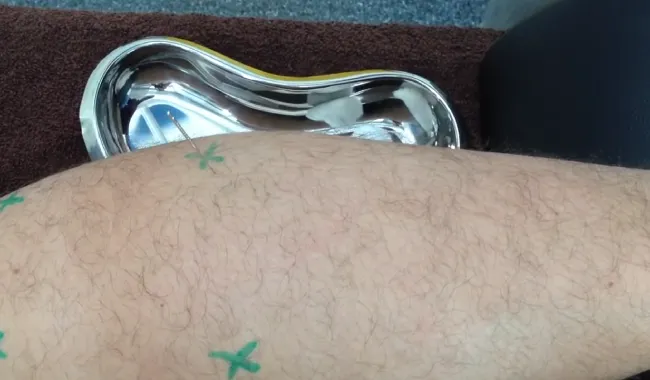
If you’re suffering from plantar fasciitis after hiking, dry needling can benefit you. Here are the top 10 benefits of dry needling for hikers who have plantar fasciitis:
- Pain relief
- Improved flexibility
- Enhanced circulation
- Reduced nerve irritation
- Quicker recovery
- Lasting effects
- Natural Approach
- Complementary to exercise
- Preventive measures
- Minimized interruptions
Let’s further examine some of these advantages.
No 01: Pain Relief
Dry needling can effectively alleviate heel pain caused by plantar fasciitis, allowing you to enjoy your hiking adventures more comfortably.
Plantar fasciitis can be a painful condition that hinders your ability to walk and hike without discomfort. However, dry needling targets and releases trigger points and knots in your muscles, providing significant pain relief.
No 02: Improved Flexibility
With improved flexibility, you’ll experience more comfortable and efficient movements in your foot and lower leg muscles, making your hikes more enjoyable.
Dry needling promotes muscle healing and breaks down scar tissue, enhancing these muscles’ flexibility. This process helps to restore the normal range of motion in your foot and lower leg muscles, reducing stiffness and increasing flexibility.
When your muscles are more flexible, they can better adapt to different terrains and movements, reducing the risk of strain or injury during hiking.
No 03: Enhanced Circulation
To enhance circulation, you’ll experience improved blood flow to the affected area, facilitating the delivery of oxygen and nutrients. Dry needling stimulates this increased blood flow, which is crucial for hikers dealing with plantar fasciitis.
By promoting better circulation, dry needling helps in the healing process and reduces inflammation. When you hike, the repetitive strain on your feet can lead to inflammation and restricted blood flow to the plantar fascia.
Dry needling can counteract this by targeting specific trigger points in the affected area, promoting blood flow and reducing inflammation. This improved circulation aids in the healing process but also helps deliver essential nutrients and oxygen to the affected tissues.
No 04: Reduced Nerve Irritation
When using this technique, you’ll notice a significant decrease in nerve irritation, allowing for greater comfort while hiking.
Dry needling for plantar fasciitis works by targeting the nerves in the foot and interrupting pain signals. By inserting thin needles into specific trigger points, the technique helps to reduce inflammation and restore normal nerve function. This can decrease foot discomfort, allowing hikers to focus on the trail rather than the pain.
No 05: Quicker Recovery
As mentioned earlier, dry needling reduces nerve irritation, which can contribute to the healing process. But in addition, dry needling promotes a quicker recovery overall. With a faster recovery, you’ll be able to get back on the trails sooner and enjoy your hiking adventures without extended downtime.
No 06: Lasting Effects
The lasting effects of dry needling can provide hikers with long-term pain relief and improved mobility for weeks to months.
Unlike other treatments that may provide only temporary relief, dry needling offers a more durable solution. It addresses the underlying cause of the pain and helps restore normal tissue function, leading to sustained benefits that can last well beyond the initial treatment session.
No 07: Natural Approach
A natural approach like dry needling can provide hikers with long-lasting pain relief and improved mobility. Also, dry needling is a drug-free and non-invasive treatment option, making it a safe and natural choice for hikers seeking pain relief.
No 08: Complementary to Exercise
Combining specific exercises and stretches with dry needling reinforces the positive effects of treatment and supports the muscles and fascia needed for hiking. By incorporating targeted exercises, you can enhance the benefits of dry needling and promote a faster recovery from plantar fasciitis caused by hiking.
These exercises can include calf stretches, toe curls, and heel raises, which help to strengthen and stretch the muscles and fascia in your feet and lower legs. Additionally, specific exercises that focus on improving balance and stability, such as single-leg squats or standing on one leg, can be beneficial for hikers.
No 09: Preventive Measures
If you’re an avid hiker prone to plantar fasciitis, taking preventive measures is important to avoid worsening the condition. One effective method is dry needling.
Dry needling can alleviate early symptoms and prevent further damage by targeting trigger points in the foot muscles. Regular sessions can help maintain the health of your feet, allowing you to continue enjoying your hiking adventures.
Incorporating dry needling into your routine can be a proactive step towards preventing plantar fasciitis from hindering your hiking experiences.
No 10: Minimized Interruptions
Dry needling offers swift results and manageable discomfort, making it a convenient option for hikers. Research has shown that dry needling can effectively improve symptoms of plantar fasciitis, including reducing pain and improving function.
Additionally, the convenience of dry needling allows hikers to easily fit sessions into their busy schedules, ensuring that their hiking plans can remain on track.
Can dry needling be effective in treating heel pain caused by hiking?
Hiking-related plantar fasciitis can be alleviated by dry needling, a technique that targets tight knots of muscle fibers. The primary goal of dry needling is to release these trigger points, thereby facilitating muscle relaxation and enhancing blood circulation.
Numerous research studies have demonstrated the efficacy of dry needling in mitigating pain and enhancing functionality among individuals suffering from plantar fasciitis, particularly when it stems from hiking-related activities.
Furthermore, it is crucial to note that dry needling is considered a safe and minimally invasive treatment option. It can be employed in conjunction with other therapies to effectively alleviate the symptoms of hiking-induced plantar fasciitis.
How long does dry needling take to resolve hiking related plantar fasciitis?
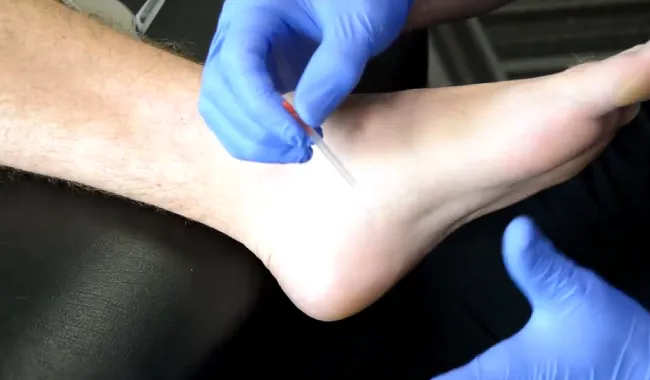
In a health and hiking context, research suggests that most individuals reported significant pain relief after just three dry needling sessions. This implies that you might experience relief from your plantar fasciitis discomfort within a few sessions.
Nonetheless, it’s vital to understand that the number of sessions required can differ based on individual factors. The severity of your condition and your body’s response to the treatment may necessitate more or fewer sessions.
To ensure you receive the most effective treatment plan, it is advisable to seek guidance from a qualified healthcare professional with expertise in both health and hiking. They can evaluate your specific situation and recommend the optimal number of sessions tailored to your needs.
Is dry needling painful for hiker’s plantar fasciitis?
A variety of discomfort can be experienced when dry needling is used for hiking or health purposes. During the procedure, you may experience sensations such as a twitch response or a pricking sensation, while sometimes you may not feel the needle insertion at all.
Once the needle reaches the trigger point, it can trigger pain and a twitch response. It’s essential to understand that this discomfort is a typical aspect of the dry needling process when treating plantar fasciitis resulting from hiking.
While the needle insertion may be momentarily uncomfortable, many individuals find that the benefits, particularly in the context of hiking-related health, outweigh this temporary discomfort.
Treating Plantar Fasciitis Caused by Hiking with Dry Needling
Dry needling can be an effective treatment for plantar fasciitis caused by hiking. It offers numerous benefits, including improved poor blood circulation, pain relief, improved range of motion, and faster healing.
Research shows that dry needling can significantly reduce pain and improve function in individuals with plantar fasciitis. It is recommended to undergo dry needling sessions for about 4-6 weeks, each lasting around 15-30 minutes.
While dry needling may cause some discomfort during the procedure, the overall benefits outweigh the temporary pain.
So, if you’re dealing with plantar fasciitis from hiking, dry needling could be a viable option to consider.
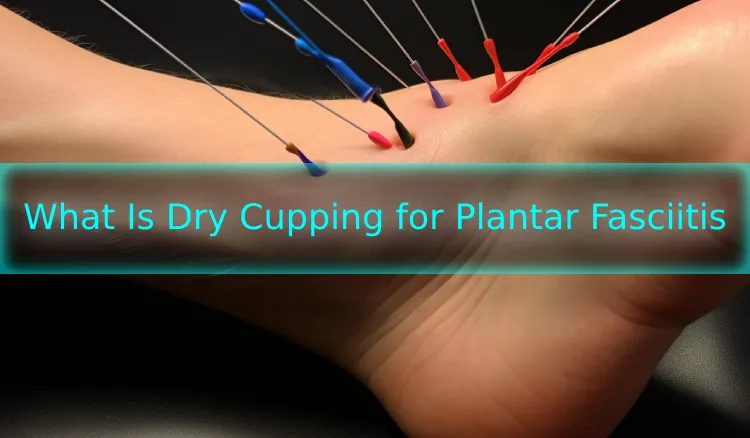
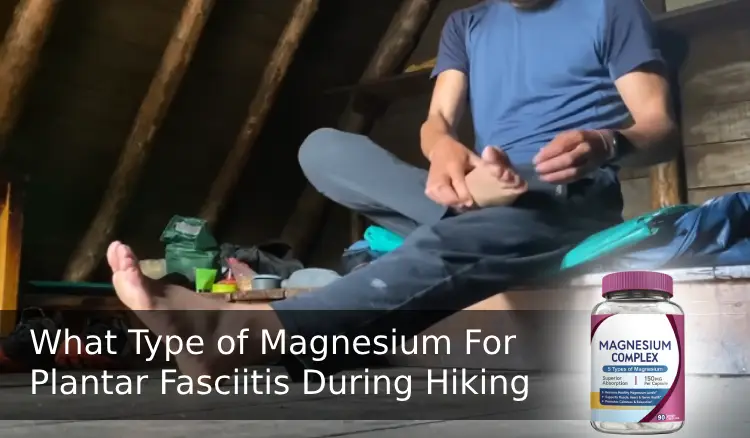

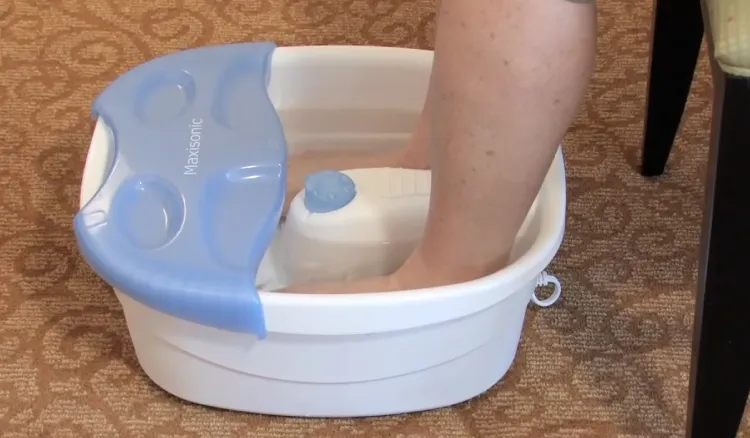
Leave a Reply